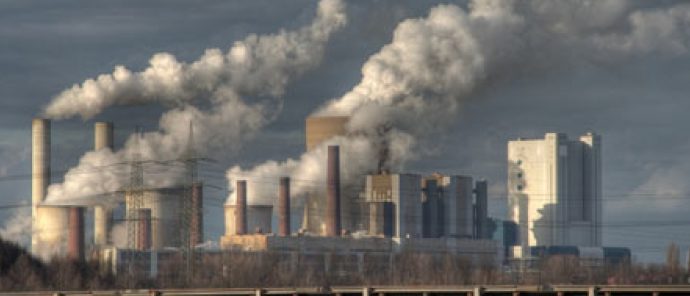A brand new study released today from the Department of Energy (DOE) finds multiple locations in Colorado that could benefit from a coal-to-nuclear power transition.
The study authors examined both operational and recently retired (within the last 10 years) coal plants across the country to screen for siting characteristics deemed favorable for a nuclear conversion.
The researchers identified over 300 current and former coal plants where such a transition was deemed feasible, including five right here in the Centennial state.
The study team evaluated the siting characteristics of recently retired plants and those operating coal-fired power plant sites run by a utility or an independent power producer utilizing publicly available data to screen U.S. coal power plant sites to nuclear-feasible locations.
After screening all retired coal sites to a set of 157 potential candidates and screening operating sites to a set of 237 candidates, the study team estimates that 80% of retired and operating coal power plant sites that were evaluated have the basic characteristics needed to be considered amenable to host an advanced nuclear reactor.
For the recently retired plant sites evaluated, this represents a capacity potential of 64.8 GWe to be backfit at 125 sites. For the operating plant sites evaluated, this represents a capacity potential of 198.5 GWe to be backfit at 190 sites.
The research findings provide further support to the idea that Colorado could benefit from including nuclear power in its future energy mix—particularly next-generation advanced reactors.
The state has committed to the complete decarbonization of the power generation sector by 2040, and recent regulatory settlements at the PUC have locked in a complete phaseout of coal-fired generation in the state by 2031.
Coal, according to the latest EIA data, currently provides roughly one-third of the state’s utility-scale electricity generation. The state will be in desperate need of a replacement for the baseload generation coal currently provides. It will also be in desperate need of a source of employment opportunity and tax revenue in former coal communities in order to fulfill its pledge to oversee a “just transition” away from coal.
According to the DOE study, nuclear is poised to do all of that and then some.
A coal to nuclear transition could significantly improve air quality in communities around the country. The case study found that greenhouse gas emissions in a region could fall by 86% when nuclear power plants replace large coal plants, which is equivalent to taking more than 500,000 gasoline-powered passenger vehicles off the roads.
It could also increase employment and economic activity within those communities. When a large coal plant is replaced by a nuclear power plant of equivalent size, the study found that jobs in the region could increase by more than 650 permanent positions. Based on the case study in the report, long-term job impacts could lead to additional annual economic activity of $275 million, implying an increase of 92% tax revenue for the local county when compared to the operating coal power.
Finally, the study identified ways in which the reuse of coal plant infrastructure can help to substantially reduce the upfront costs associated with constructing new advanced nuclear reactors—currently the main sticking point among nuclear skeptics.
The reuse of coal infrastructure for advanced nuclear reactors could also reduce costs for developing new nuclear technology, saving from 15% to 35% in construction costs. Coal-to-nuclear transitions could save millions of dollars by reusing the coal plant’s electrical equipment (e.g., transmission lines, switchyards), cooling ponds or towers, and civil infrastructure such as roads and office buildings.
Companies could also take advantage of one or more of the technology-neutral zero carbon tax credits included in the so-called Inflation Reduction Act that was recently signed into law by President Biden, creating further financial incentives to choose nuclear as a coal replacement.
According to the Associated Press:
There are nearly $375 billion in climate incentives in the Inflation Reduction Act. Among them, there’s a new tax credit available to any carbon-free electricity generator. That includes new advanced nuclear reactors that begin construction in 2025 or later. Existing nuclear plants that expand their output could get credit for that additional electricity production. The credit is worth at least $25 per megawatt-hour for the first decade the plant operates, according to NEI, the industry’s trade association.
Or, owners of a new carbon-free electricity generator could take advantage of an investment tax credit, worth 30% of the amount they paid to build the facility.
Both tax credits include a 10-percentage point bonus for facilities sited where residents have relied on fossil fuel plants or mining, making the incentive even greater for coal-to-nuclear transitions.
While the DOE analysis only models the benefits and feasibility of one particular case study, its model assumptions and compiled data could be used by a curious local community or interested stakeholder to conduct a more granular analysis of a specific coal plant/replacement nuclear design.
Exploratory conversations have already begun, with varying levels of receptiveness, to replace soon-to-be retired coal stations in Craig, Hayden, and Pueblo with advanced nuclear. Today’s report and the incentives recently passed by the federal government only bolster the case for those efforts.
The full study can be found here.








